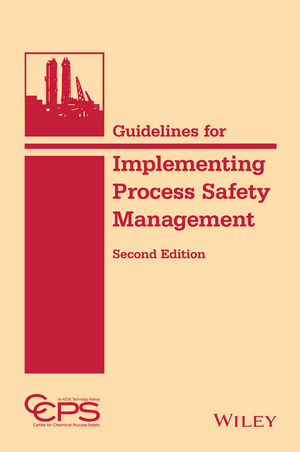Six questions for labor’s top workplace safety expert

Source: Worker safety
Peg Seminario, the AFL-CIO’s director of occupational safety and health, is a nationally recognized expert on worker safety. She has a masters degree in industrial hygiene from Harvard, and has worked for the AFL-CIO since 1977. The Labor Press interviewed her by phone April 12.
What can you tell us so far about the Trump administration’s record on worker safety? Already we’ve seen the Trump administration repeal two important workplace safety rules. They’ve proposed the elimination of funding for worker safety and health training programs. They’ve proposed the elimination of the Chemical Safety Board. And they’ve proposed slashing the job safety research budget. Andrew Puzder, as the first nominee for secretary of labor, obviously caused great concern given the record of his company, wage violations as well as workplace safety, and his public positions on labor matters. So we were glad to see him withdraw. Alex Acosta, who has now been nominated, has a better history when it comes to government service. But we remain concerned: During his confirmation hearings, he refused to commit to fully implementing important safety and health rules, including OSHA’s new silica rule.
Speaking of which, on April 6, OSHA announced that it’s not going to enforce the new crystalline silica rule in the construction industry until Sept. 23, 2017, three months later than previously scheduled. For those who aren’t familiar, can you explain what the silica rule is in a nutshell? It’s a really critical safety and health protection that the unions fought for for decades. The rule would cut the permissible exposure to silica in half, in general industry, and by even more in construction. It would also require employers to use controls —such as wet methods, wetting down the dust, or vacuum attachments and ventilation — to limit workers’ exposure to the dust. With the reductions in exposure from the new rule, hundreds of workers’ lives will be saved every year.
Do you think the delay is political, and is there danger the new silica rules could be scrapped altogether? We are very concerned. President Trump ran on a platform of deregulation. And he has been clear that he’s going to keep that promise. He has issued several executive orders that are intended to roll back regulation. He has an executive order that says for every new protection issued, two protections must be taken off the books. I say 1 minus 2 is a negative number. That means less protection for workers, and that’s not good. Another executive order directs all agencies to look at all existing rules to see which are burdensome on business or too costly, and to propose rules for elimination or weakening. There is nothing in his agenda that is directed toward improving protections for workers. His budget proposal also included a 21 percent cut in the Department of Labor. We don’t know how that’s going to be distributed, because the details haven’t been released, but we know that a 21 percent cut at OSHA would decimate their enforcement activities. It would lead to more injuries and illnesses and deaths.
A new rule about workers who are exposed to beryllium has also been pushed back two months. Can you explain also what beryllium is, who’s at risk, and what the rule does? Beryllium is a toxic metal. It’s used particularly in making nuclear weapons, aircraft, certain machining operations. Its use is much more limited than it was in the past because it’s so toxic. The new rule reduces exposure. This is a rule that took nearly 20 years for OSHA to issue. The rule ultimately came as a result of a joint proposal by the Steelworkers union and the beryllium industry. But now, seeing a different political environment, some in the industry are trying to weaken the standard. And you’ve seen the Trump administration delay the effective date.
President Trump also signed a law, passed by the Republican Congress, that overturns a new OSHA rule about employer records of injuries and illnesses. What that’s about? It was a very simple OSHA rule was issued in December that would clarify employers’ obligation to keep accurate injury records. This is a requirement that has been on the books since 1971. But a court decision had found that … OSHA’s record-keeping rule wasn’t clear…. So OSHA clarified the rule. It didn’t change anything. It just says employers have to record injuries and illnesses in the workplace, those records have to be accurate, they have to be kept five years, and during that five-year period if OSHA comes in and inspects and finds that there were violations on those records, they can cite. But even this was too much for Republicans in Congress, and Trump. Republicans voted to overturn the rule, and the president signed it. What that means is that when OSHA goes in workplaces, they’re no longer going to be able to hold employers accountable who had longstanding practices of falsifying records of reported injuries. OSHA has very few inspectors, and they’re not in workplaces regularly. But when they do show up, the first thing they do is look at the records over a couple year period, because the records give a picture of what has happened in the workplace. And they sometimes find that employers have not recorded large numbers of injuries. They falsify their records. They’ve misrepresented safety conditions in the workplace. Those are the cases where OSHA has issued big fines and penalties against those employers with these widespread practices. But if OSHA can only look back six months, six months from the time of the injury, not the time of the inspection, they won’t be able to hold employers accountable for these egregious practices of falsifying records and not reporting injuries.
Suppose you were put in charge of OSHA. What would you focus on? I would move forward on a couple of major rules that have been outstanding for a long time, one of them being a rule on combustible dust, which is a major hazard and present in thousands of workplaces across the country. Also, I’d move forward on better regulation on chemicals. Our experience is it’s these broad major rules that significantly change practice at the workplace.
Looking for a reprint of this article?
From high-res PDFs to custom plaques, order your copy today!







